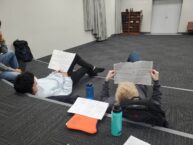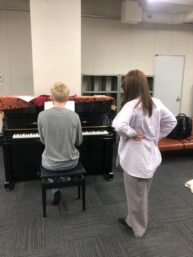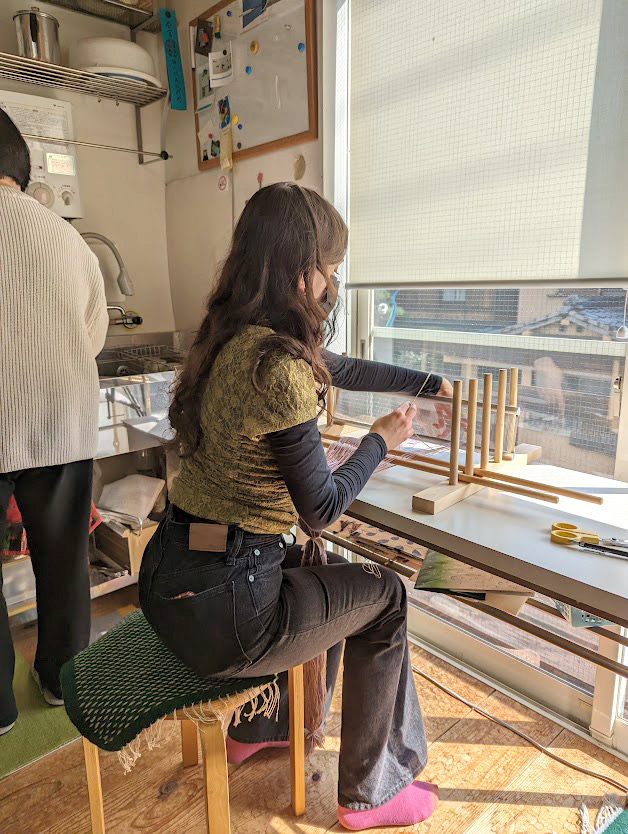
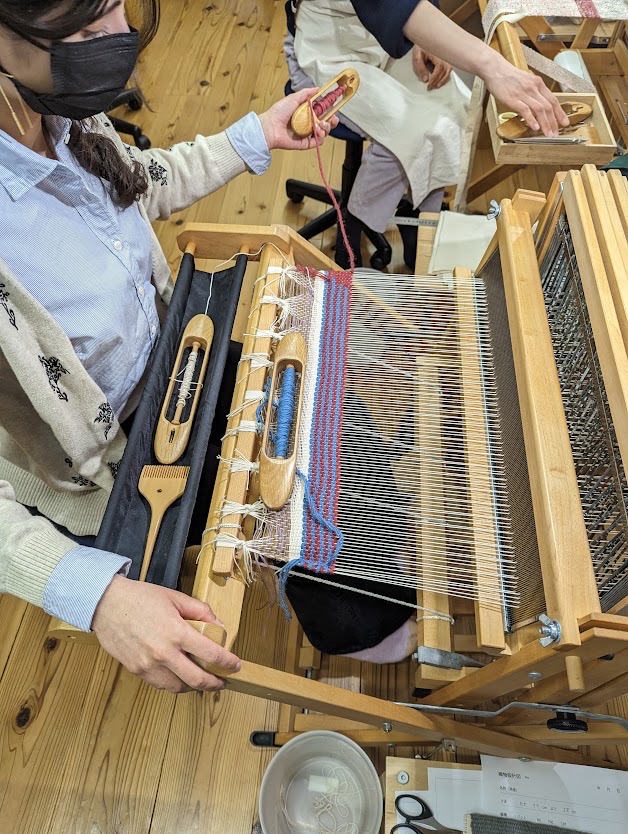 Thanks to Professor Rinne and Nakata-sensei’s research and support, I had the opportunity to takelessons from Kawasaki-sensei, a weaving teacher, obi weaver, and contemporary artist based near Kitaoji station. Once a week, I took the train to Kawasaki-sensei’s classroom and spent around 5-6 hours (including a break for tea, coffee, and sweets!) learning two styles of hand-weaving called hiraori and tsudzureori (tapestry weaving), typically alongside one to three other private students.
Thanks to Professor Rinne and Nakata-sensei’s research and support, I had the opportunity to takelessons from Kawasaki-sensei, a weaving teacher, obi weaver, and contemporary artist based near Kitaoji station. Once a week, I took the train to Kawasaki-sensei’s classroom and spent around 5-6 hours (including a break for tea, coffee, and sweets!) learning two styles of hand-weaving called hiraori and tsudzureori (tapestry weaving), typically alongside one to three other private students.
My time in Kawasaki-sensei’s classroom has been an experience that I’ll treasure forever. When I met him, I had never touched a loom—and in the weeks that followed, I prepared and hand-wove hiraori scarves and samples as well as a tapestry-weave genkan mat that I designed with a little sketch. I’m incredibly grateful for the time I got to spend with the loom, but I’m equally if not more grateful for the personal connections that I made over the weeks. Assimilating and becoming comfortable in the classroom was a slow process—we communicated exclusively in Japanese, I was the only foreigner, and everyone was at least ten years older than me—but deeply rewarding even in the most subtle ways.
Kawasaki-sensei, his wife, and his other students are all lovely people who have repeatedly amazed me with their dedication, knowledge, and kindness. To future students—if you’re someone who feels drawn to fiber arts, this is your sign to pursue that interest in Kyoto. If that’s not you—don’t let fear of discomfort and uncertainty keep you from what could be an incredible experience! Keep an open mind, be genuine and thoughtful, and do your best—the rest will come with time.




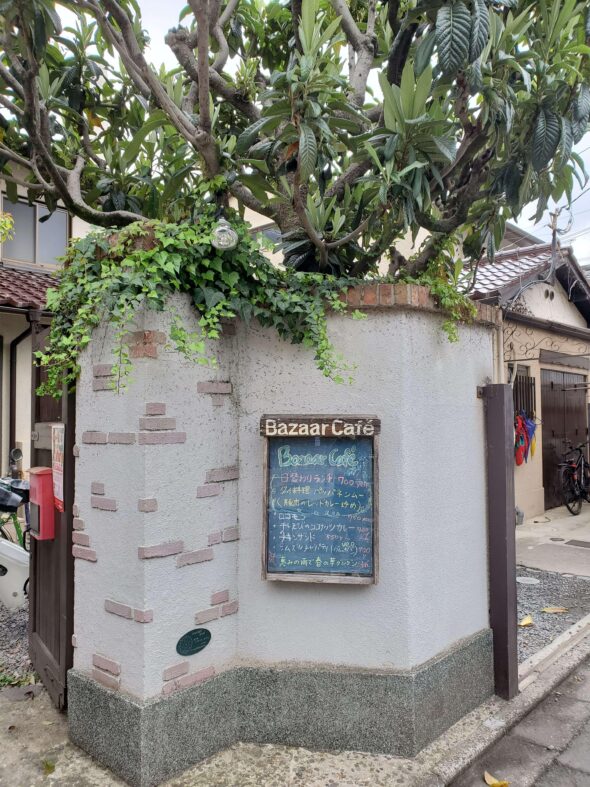
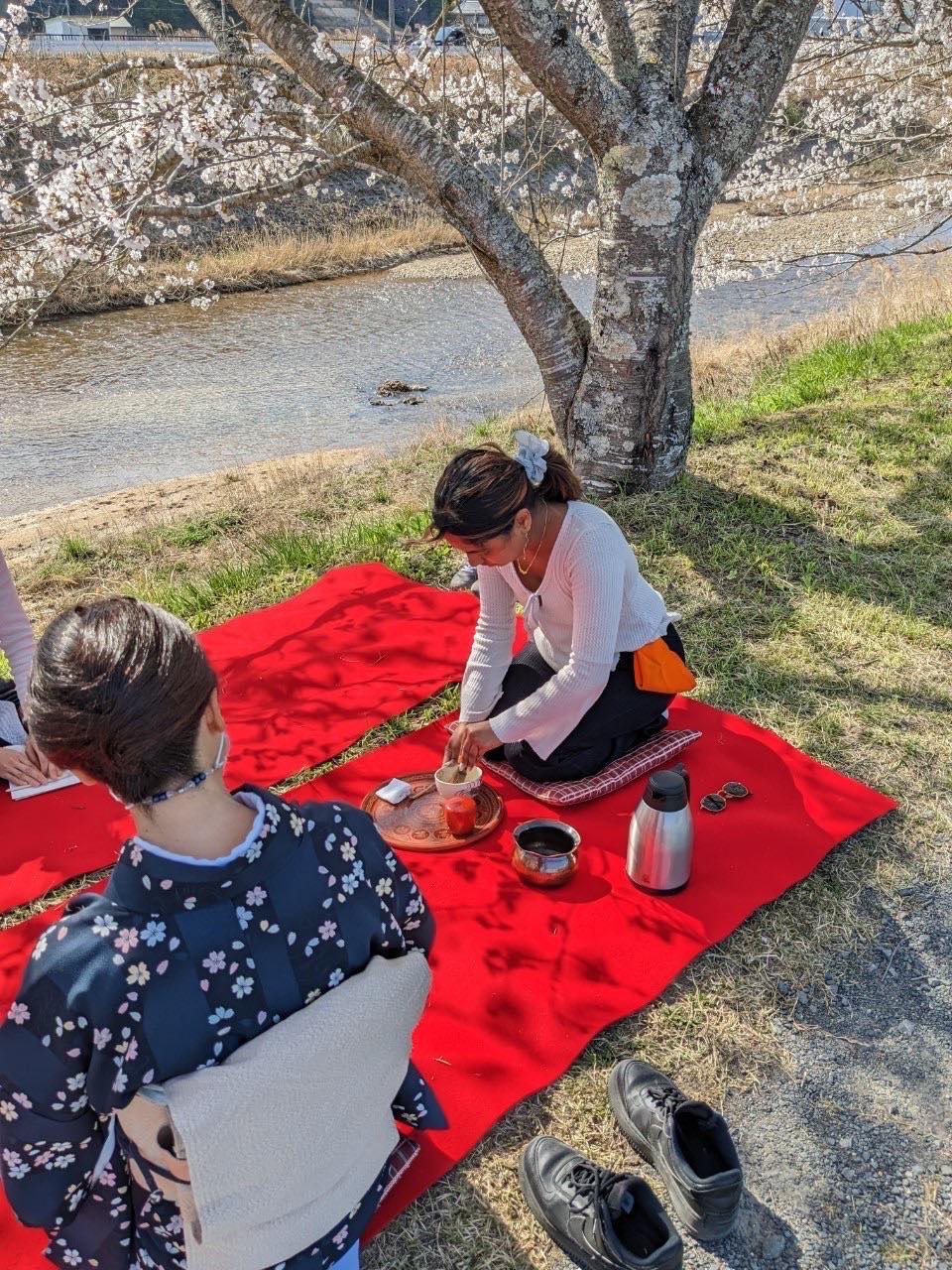 For my CIP I took tea ceremony, or sadou, lessons with Fujimura Sensei. The KCJS office introduced us to Fujimura Sensei and it seems like KCJS has a long relationship with her. While normally the study of sadou takes decades and is a very lengthy process, since we only had one semester Fujimura sensei customized the lessons for us so that we were able to end by being able to perform the tea ceremonies, or the obon-temae. The tea room is a little out of the way in Takagamine, but the environment is absolutely stunning and so the commute is worth it. The tea room is situated right over a river in a silent forest, so you can hear the sound of the water while in the tea room. Sensei is an extremely elegant woman who is also one of the most precious and sweetest people I have ever met. She even made a bento for us on two occasions, for the Doll Festival and cherry blossom viewing, and of course we got to enjoy the most exquisite wagashi, or seasonal Japanese confectionary every class. The thing that was the most meaningful for me was that in every lesson sensei would also make a point to talk about how to use the philosophy that sadou teaches us and incorporate it into our busy, stressful everyday lives.
For my CIP I took tea ceremony, or sadou, lessons with Fujimura Sensei. The KCJS office introduced us to Fujimura Sensei and it seems like KCJS has a long relationship with her. While normally the study of sadou takes decades and is a very lengthy process, since we only had one semester Fujimura sensei customized the lessons for us so that we were able to end by being able to perform the tea ceremonies, or the obon-temae. The tea room is a little out of the way in Takagamine, but the environment is absolutely stunning and so the commute is worth it. The tea room is situated right over a river in a silent forest, so you can hear the sound of the water while in the tea room. Sensei is an extremely elegant woman who is also one of the most precious and sweetest people I have ever met. She even made a bento for us on two occasions, for the Doll Festival and cherry blossom viewing, and of course we got to enjoy the most exquisite wagashi, or seasonal Japanese confectionary every class. The thing that was the most meaningful for me was that in every lesson sensei would also make a point to talk about how to use the philosophy that sadou teaches us and incorporate it into our busy, stressful everyday lives.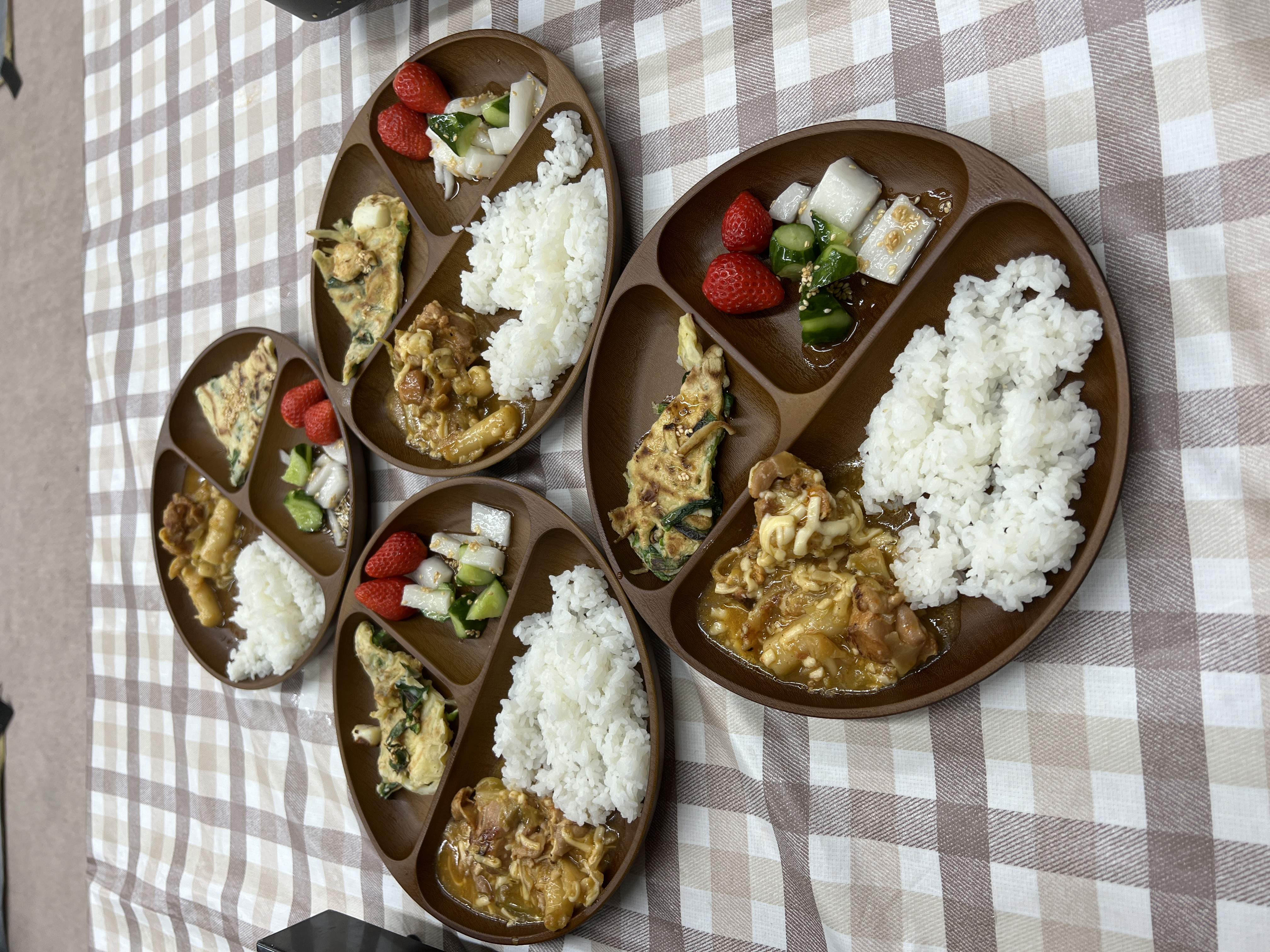
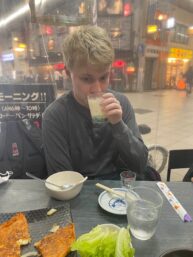
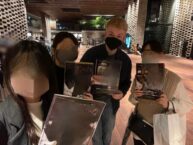
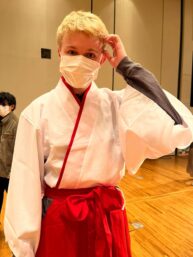 erywhere, with some minor differences. What was
erywhere, with some minor differences. What was 